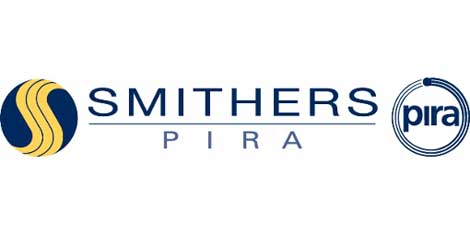
Smithers Pira publishes new report, The Future of Global Inkjet Printing to 2021, which provides an in-depth, long-term assessment of this rapidly evolving industry.
In 2016 the inkjet print and printed packaging market will be worth $61.9 billion, the equivalent of 526 billion A4 prints. Prospects for growth in all sectors are very positive with inkjet volume forecast to grow by an average CAGR of 12.7% in 2016-21 across the world, and 8.7% in value terms.
“The increasing use of inkjet in all its forms is opening new opportunities in print and printed packaging. The technology is changing the business models for many print service providers and converters. The equipment and ink supply side is extremely attractive for suppliers, with lucrative recurring annual revenue streams,” said Sean Smyth, author of the report.
“The demand for high-value inkjet printed products is predicted to continue growing for many years, with packaging poised to adopt inkjet in most segments.”
All regions are taking up the technology, as it provides economic benefits over alternative analogue and digital printing technologies, and opens new applications. This fast growth is encouraging suppliers to invest huge sums to bring new technology to the market, and this arms race is ensuring inkjet continues to improve in reliability, quality, and productivity.
The adoption of inkjet has led to improvements in supply chains across the book and newspaper sectors. There is traction in labels, with high-performance narrow web presses and a growing sector of hybrid inkjet/flexo press. Packaging is a huge opportunity for inkjet, with new high-performance systems coming to market. Inkjet is being used to print directly onto bottles, cans and jars, demonstrating the potential to simplify packaging supply chains.
Inkjet can add functionality to print and packaging; personalisation and versioning are very common, while there is a growing trend to add value and embellish print products. Inkjet can apply thick films and speciality fluids to provide tactile or dimensional effects. Varnishing and print enhancement systems are growing in popularity.
Inkjet technology is developing apace, the result of multi-billion dollar investments by printhead manufacturers, ink makers (with their raw material suppliers) and print equipment vendors. There are many types of bespoke inkjet print systems that are configured for particular applications.
There are solvent-based, water-based and UV curing inks in use, with a niche of other types. Solvent is losing share to water-based and UV curing inks, which are growing at the fastest rate. Inkjet is also becoming increasingly important in the fields of industrial applications, with textile printing, decoration, ceramics, 3D, electronics, and textile printing. These developments contribute to wider inkjet improvements.
The Future of Global Inkjet Printing to 2021 examines the fast-growing adoption of inkjet in publication, security and commercial printing, alongside exciting developments opening up packaging applications.




